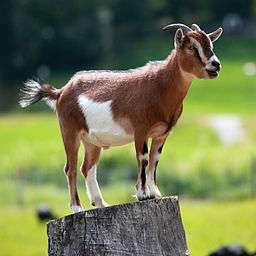Purple
Purple is defined as a deep, rich shade between crimson and violet, or, more broadly, as a range of hues of color between blue and red, or as a dark color that is a blend of red and blue. According to surveys In Europe and the U.S., purple is the color most often associated with royalty, magic, mystery and piety. When combined with pink, it is associated with eroticism, femininity and seduction.
Purple was the color worn by Roman magistrates; it became the imperial color worn by the rulers of the Byzantine Empire and the Holy Roman Empire, and later by Roman Catholic bishops. Similarly in Japan, the color is traditionally associated with the Emperor and aristocracy.
Purple and violet are similar, though purple is closer to red. In optics, there is an important difference; purple is a composite color made by combining red and blue, while violet is a spectral color, with its own wavelength on the visible spectrum of light.
Etymology and definitions
The word 'purple' comes from the Old English word purpul which derives from the Latin purpura, in turn from the Greek πορφύρα (porphura), name of the Tyrian purple dye manufactured in classical antiquity from a mucus secreted by the spiny dye-murex snail.
Purple (disambiguation)
Purple is a color.
Purple may also refer to
See also
Grime
Grime may refer to:
People with the surname
See also

Grime music
Grime is a genre of music that emerged in England in the early 2000s. It is primarily a development of UK garage, drum and bass and dancehall.
Pioneers of this stylized music include Dizzee Rascal, Jammer, Kano, Lethal Bizzle, Skepta, and Wiley.
Prominent grime crews include Boy Better Know, Newham Generals and Roll Deep.
History
Origins
Grime emerged from London with its origins on UK pirate radio stations such as Rinse FM, Deja Vu FM, Freeze 92.7 and Raw Mission. At this point, the style was known by a number of names, including 8-bar (meaning 8 bar verse patterns), nu shape (which encouraged more complex 16 bar and 32 bar verse patterns), sublow (a reference to the very low bassline frequencies, often around 40 Hz), as well as eskibeat, a term applied specifically to a style initially developed by Wiley and his collaborators, incorporating dance and electro elements. This indicated the movement of UK garage away from its house influences towards darker themes and sounds. Among the first tracks to be labelled "grime" as a genre in itself were "Eskimo", "Ice Rink" and "Igloo" by Wiley, "Pulse X" by Musical Mob and "Creeper" by Danny Weed.
Proposed top-level domain
The Domain Name System of the Internet consists of a set of top-level domains which constitute the root domain of the hierarchical name space and database. In the growth of the Internet, it became desirable to expand the set of initially six generic top-level domains in 1984. As a result new top-level domain names have been proposed for implementation by ICANN. Such proposals included a variety of models ranging from adoption of policies for unrestricted gTLDs that could be registered by anyone for any purpose, to chartered gTLDs for specialized uses by specialized organizations. In October 2000, ICANN published a list of proposals for top-level domain strings it had received.
Geographic proposals

Goat
The domestic goat (Capra aegagrus hircus) is a subspecies of goat domesticated from the wild goat of southwest Asia and Eastern Europe.
The goat is a member of the family Bovidae and is closely related to the sheep as both are in the goat-antelope subfamily Caprinae. There are over 300 distinct breeds of goat. Goats are one of the oldest domesticated species, and have been used for their milk, meat, hair, and skins over much of the world. In 2011, there were more than 924 million live goats around the globe, according to the UN Food and Agriculture Organization.
Female goats are referred to as "does" or "nannies", intact males as "bucks", "billies", or "rams" and their offspring are "kids". Castrated males are "wethers". Goat meat from younger animals is called "kid" or cabrito (Spanish), and from older animals is simply known as "goat" or sometimes called chevon (French), or in some areas "mutton" (which more often refers to adult sheep meat).
Etymology
The Modern English word goat comes from Old English gāt "she-goat, goat in general", which in turn derives from Proto-Germanic *gaitaz (cf. Dutch/Icelandic geit, German Geiß, and Gothic gaits), ultimately from Proto-Indo-European *ǵʰaidos meaning "young goat" (cf. Latin haedus "kid"), itself perhaps from a root meaning "jump" (assuming that Old Church Slavonic zajęcǐ "hare", Sanskrit jihīte "he moves" are related). To refer to the male, Old English used bucca (giving modern buck) until ousted by hegote, hegoote in the late 12th century. Nanny goat (females) originated in the 18th century and billy goat (for males) in the 19th.

Kid (film)
Kid is a 2012 drama film. It was written and directed by Fien Troch, produced by Antonino Lombardo, and starred Bent Simons, Gabriela Carrizo and Maarten Meeusen.
The film tells the story of Kid, a seven-year-old boy who lives with his mother and his older brother Billy on a farm outside a small town. Abandoned by their father, they have had to fend for themselves. Their finances are in ruins and the two boys have to move with their uncle and aunt.
Kid had its world premiere on October 12, 2012 at the Flanders International Film Festival Ghent. It has received high praise from film critics and won various awards from numerous film organizations and festivals. Kid received the André Cavens Award for Best Film by the Belgian Film Critics Association (UCC). The film had its North American premiere at the AFI Fest on November 2, 2012. It received three nominations at the 4th Magritte Awards, winning Best Flemish Film in Coproduction.
Notes
External links
Podcasts:

